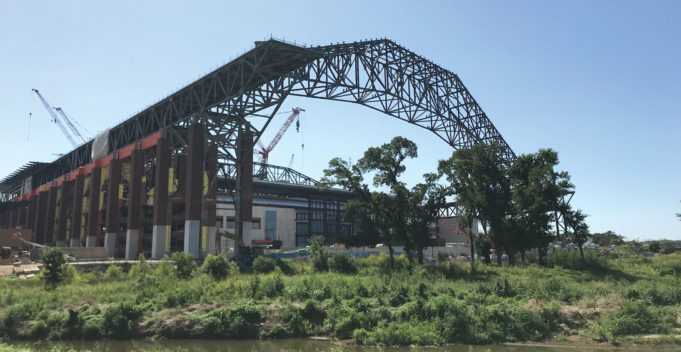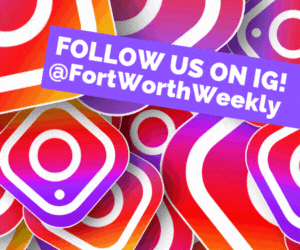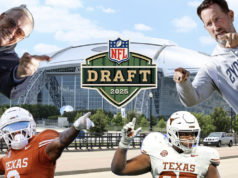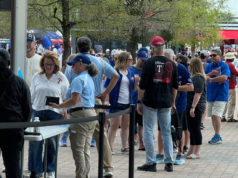At Major League Baseball’s trade deadline, both Texas-based teams made a commitment to win the World Series. One has positioned itself to do so in 2019. The other seems to have its eye on 2020.
MLB rules allow teams to swap playing personnel at will (subject to contractual no-trade provisions for a few players) through 2 p.m. Central Time on July 31. A flurry of activity leading up to the cutoff time generally sees teams with postseason aspirations for the current year acquire players to help them make it to October. They acquire them in exchange for younger prospects, whom non-contending teams hope to develop into future contributors.
One Texas team swiped the headlines minutes before the deadline when they sent four young players to Arizona in exchange for Zack Greinke. The six-time All-Star and 2009 Cy Young Award winner was widely considered the best pitcher available at the deadline. He joins an already formidable starting rotation and the core of a lineup that won a title two seasons ago. They also picked up right-handed pitchers Aaron Sanchez and Joe Biagini from Toronto and catcher Martín Maldonado from the Chicago Cubs. By late in the day on the 31st, Caesar’s Sportsbook had elevated the Houston Astros to co-favorites (with the Los Angeles Dodgers) to win the 2019 World Series.
The other Texas team trailed the Astros in the American League West standings by 15.5 games heading into the evening of July 31. They could also look up at a 7.5-game deficit, and four teams between themselves and the final wild-card playoff berth. They had different priorities than their rivals down I-45.
Until a recent slump (compounded by losing All-Star outfielder Joey Gallo with a broken hamate bone), the Texas Rangers might have had a case to consider acquiring proven talent at the deadline to make a push for this year’s postseason. Though they didn’t become buyers, they didn’t really look like sellers, either. They made two trades. One sent relief pitcher Chris Martin to Atlanta for minor league starter Kolby Allard, whose prospect ranking has dropped a bit over the last couple of years, but a prospect pitching at the Triple-A level who doesn’t turn 22 until Tuesday has an upside. He could end up pitching some for the Rangers next year, while Martin, scheduled for free agency this offseason, very well might not.
The Rangers also acquired pitcher Nate Jones from the Chicago White Sox for minor-league pitchers Joseph Jarneski (age 19, having a good season for Surprise in the Rookie League) and Ray Castro (22 and performing well against younger competition in the Dominican Summer League). Jones will go on the 60-day injured list for the Rangers, having undergone surgery to repair a torn flexor tendon in his right forearm on May 13. This trade happened because the Rangers also received additional bonus pool money under MLB’s cap for signing international amateurs. They’ll use it on touted teenager Bayron Lora, who won’t appear in the majors for a few years.
The Rangers didn’t trade All-Stars Mike Minor and Hunter Pence. They also didn’t move veterans Lance Lynn, Shin-Soo Choo, Asdrúbal Cabrera, or Jesse Chavez. One might wonder why not if they didn’t expect to contend this year?
We can’t 100-percent rule out a charge over the last two months of 2019. Teams ahead of them could suffer crucial injuries, young Rangers could step up, Rougned Odor could come out of his season-long slump — one never knows for sure. Most likely, they’ll look ahead to next year, and the team has every veteran listed above except Pence and Cabrera under contract through at least the 2020 season. The Rangers designated Cabrera for assignment after Wednesday’s game, ending his time with the franchise, but Pence went to Arlington High School and grew up cheering for the home team. If the club wants to re-sign the outfielder in the offseason, one would think the odds would be in their favor.
The trading deadline has a lot to do with windows of contention. When does a team feel it can contend for a championship? The Rangers’ moves indicate they think they might have a chance to do so next season. The Texas offense this year ranks in the American League’s top six in runs scored, slugging percentage, and OPS (on-base plus slugging average). Continued improvement by young talent might push that output even higher, and the Rangers will give their younger players more time in the lineup down the stretch this season to speed their progress. The team’s pitching has ranked in the bottom half of the league, but Minor and Lynn have, for the most part, performed superbly in the most difficult-to-fill roles on a staff, top-of-the-rotation starters.
Could Texas conceivably address its pitching weaknesses this offseason? One can often find bullpen pieces in the offseason or promote them from within. Could they also make a splash in the starting pitching market? The team has traditionally had trouble closing deals with top-tier free agent starters (e.g. Greinke, Roger Clemens, Barry Zito). This offseason, however, will mark the first since the dawn of free agency that 29 other clubs won’t get to remind undecided players about how hot the field gets in a Texas summer. Retractable-roof-endowed Globe Life Field in Arlington opens next season in all its air-conditioned splendor. Between the stadium’s new revenue streams, a lot of young players on relatively reasonable contracts, and Choo’s $21 million salary set to come off the books after 2020, perhaps ownership would consider approving the dollars necessary to make a splashy signing. The likes of Gerrit Cole, Madison Bumgarner, Zack Wheeler, and Stephen Strasburg could become available.
Of course, Houston will remain next year’s favorites in the division they share with the Rangers, especially given they’ll have Greinke’s services through 2021. It’s vital that a baseball operations department assess its chances realistically to avoid ending up in a cycle of mediocrity. The Astros’ front office can safely assume they will contend in 2019 and 2020. A handful of other clubs, like the Dodgers, Yankees, and maybe a few others, can say the same. For every other team, it’s guesswork.
Keep this in mind: A dozen wild card teams have made the World Series since 1997, with half those winning a title. So the Rangers don’t necessarily have to crush Houston next year. Sneaking into the postseason could work, too. Can they realistically hope to do so? This year’s trade deadline activity (or lack of same) would seem to indicate they believe they can.
Some additional notes from the deadline:
• In New York, the Mets seem to believe they can contend in 2020 – and maybe 2019 as well. Despite a losing record, they profiled as buyers this July. Not only did they not move their own hot commodities – starting pitchers Noah Syndergaard and Wheeler – but they acquired stud starter Marcus Stroman from the Toronto Blue Jays. The Mets started Wednesday five games out of a wild-card spot and now have one of the best rotations in baseball. Wheeler and infielder Todd Frazier can become free agents after the season, but the rest of the core will remain for 2020.
• Also in the land of Seinfeld, the Yankees made news by doing nothing. They lead the American League East, but as their pitching has cratered of late, the Rays and Red Sox have positioned themselves to put the pressure on. Tampa acquired several players (though no big stars) at the deadline, and the Sox picked up back-of-the-rotation starter Andrew Cashner. The Yanks actually may have made the division’s best in-season acquisition when they acquired slugger Edwin Encarnación in June from the Mariners for a minor leaguer. They decided to hold on to the rest of their prospects once July hit. Minor league talent has become increasingly valued in recent years, and that’s never more in evidence when even the Yankees won’t pay a prospect premium for major-league talent. The team will have to hope that its offense, even missing the injured Giancarlo Stanton and Gary Sánchez, can mash well enough to overcome pitching deficiencies exacerbated by injuries to C.C. Sabathia, Dellin Betances, and Luis Severino.
• Another big-market team, the Dodgers, also didn’t do much at the deadline, picking up only lefty reliever Adam Kolarek. While their bullpen has weaknesses, Los Angeles has more cushion than their New York counterparts. They’ve run away with their division and have a substantial lead for home-field advantage in the National League. Once they reach October, more off days mean they can move a starter into the pen. If Kenley Jansen performs adequately as their closer, they may be fine












